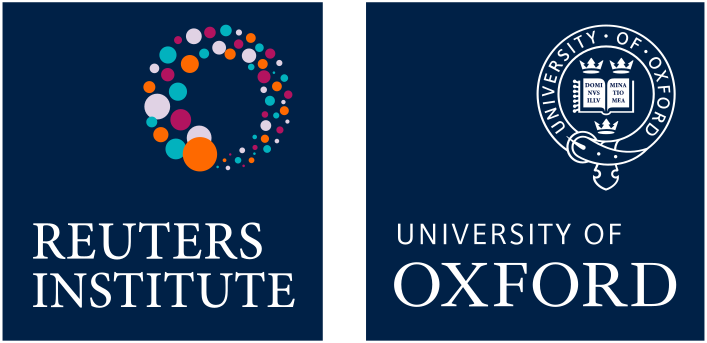
Croatia
Croatia’s small media market showed some growth in 2024, with increasing awareness of the need for digital transition. The structure of the news industry remains largely unchanged with offline use dominated by two foreign-owned TV news channels (Nova and RTL) together with the public broadcaster (HRT). Restructuring of the public service broadcaster and ensuring its continued relevance are among the main concerns of the sector.
While the Croatian commercial media market is small, advertising revenues, which are the main source of funding, have been growing. Industry estimates1 suggest TV, radio, print, and outdoor advertising rose by 5% in 2024 to €217m (but with a 5% fall in print advertising), while the online advertising market accounted for €133m, after projected growth of 13% in 2024.
The major commercial TV companies, which have been foreign-owned for over two decades, still dominate as sources of information, but Nova TV’s (United Group) 15-year broadcasting licence is up for renewal in 2025. Both RTL TV and Nova TV were fined in 2023 by the Council for Electronic Media for failing to deliver the required 2.5% investment into programmes from Croatian independent producers and were expected to make up for it in 2024.
The United Group operates the cable news channel N1 and the top-ranked free-to-air station, Nova TV, but financial problems led it to implement cuts at N1 in 2024. Meanwhile Czech-based Central European Media Enterprises (CME) has owned RTL TV since 2022. Austrian and German companies are prominent in the print market. The tabloid 24sata, owned by the Austria Styria group, is the best-selling newspaper and attracts large numbers online, while the domestically owned Hanza media is the market leader in print media overall. The government has agreed on the need to start subsidising print distribution, since one of the largest print distribution companies closed in 2024, placing access to printed newspapers and magazines in jeopardy, especially in rural areas.
Croatian audiences remain reluctant to pay for online news. The proportion taking out a subscription, donation, or membership at 6%, is one of the lowest figures in our survey.
The situation of the public broadcaster HRT has deteriorated in the past two years. Although it has the security of independent financing through a compulsory licence fee of around €10.40 a month, since this has been static for the past 15 years, it had to be bailed out by government top-up payments two years in a row. HRT’s director general Robert Šveb has engaged a firm of consultants to advise on restructuring the company and investing more in digital production and distribution. Mr Šveb’s changes have been criticised by some for allegedly focusing on attracting audiences rather than the public service remit, and the outsourcing of technical and production tasks. The restructuring plans include a 30% reduction in HRT's staff over a three-year period. Our data show that HRT is still one of the top sources of news, used by almost half (45%) the adult population weekly, a similar number to the two commercial TV stations. Meanwhile, HRT’s online performance at 22% weekly reach has grown by 5pp in the last year but remains much less than for broadcast.
Although the local media scene sports a large number of different radio and television stations as well as digital-born media, some areas remain poorly covered and could be described as news deserts, according to recent research (Vozab and Čuvalo 2024). In addition, local media are in a constant funding bind, as very small local markets cannot generate sufficient advertising revenue to support them, which breeds dependence on the local politicians or state advertising, where public accountability continues to be lacking.
The Croatian Journalists Association reported 752 active lawsuits against journalists in 2024, down from 945 in the previous year, but still a high number. One independent study2 found that of 1,333 lawsuits against journalists in the period from 2016 to 2023, 41% had at least one characteristic of a SLAPP suit. The study also found that cases took an average of four years, and most judgments found in favour of the journalists.
Zrinjka Peruško
Centre for Media and Communication Research, University of Zagreb
Changing media
The downward trend in use of news is seen in all media except television, signifying perhaps greater audience disengagement between election cycles. Very few people pay for online news.
Pay for online news
6%
Trust in news overall
36%
(+4)
=27/48
Overall trust in the news is up but still 9pp lower than during the height of the Coronavirus pandemic. The most used commercial channels, Nova TV and RTL, are amongst the most trusted. By contrast the trust score of cable news channel N1 fell slightly this year after a significant reduction in programming.

